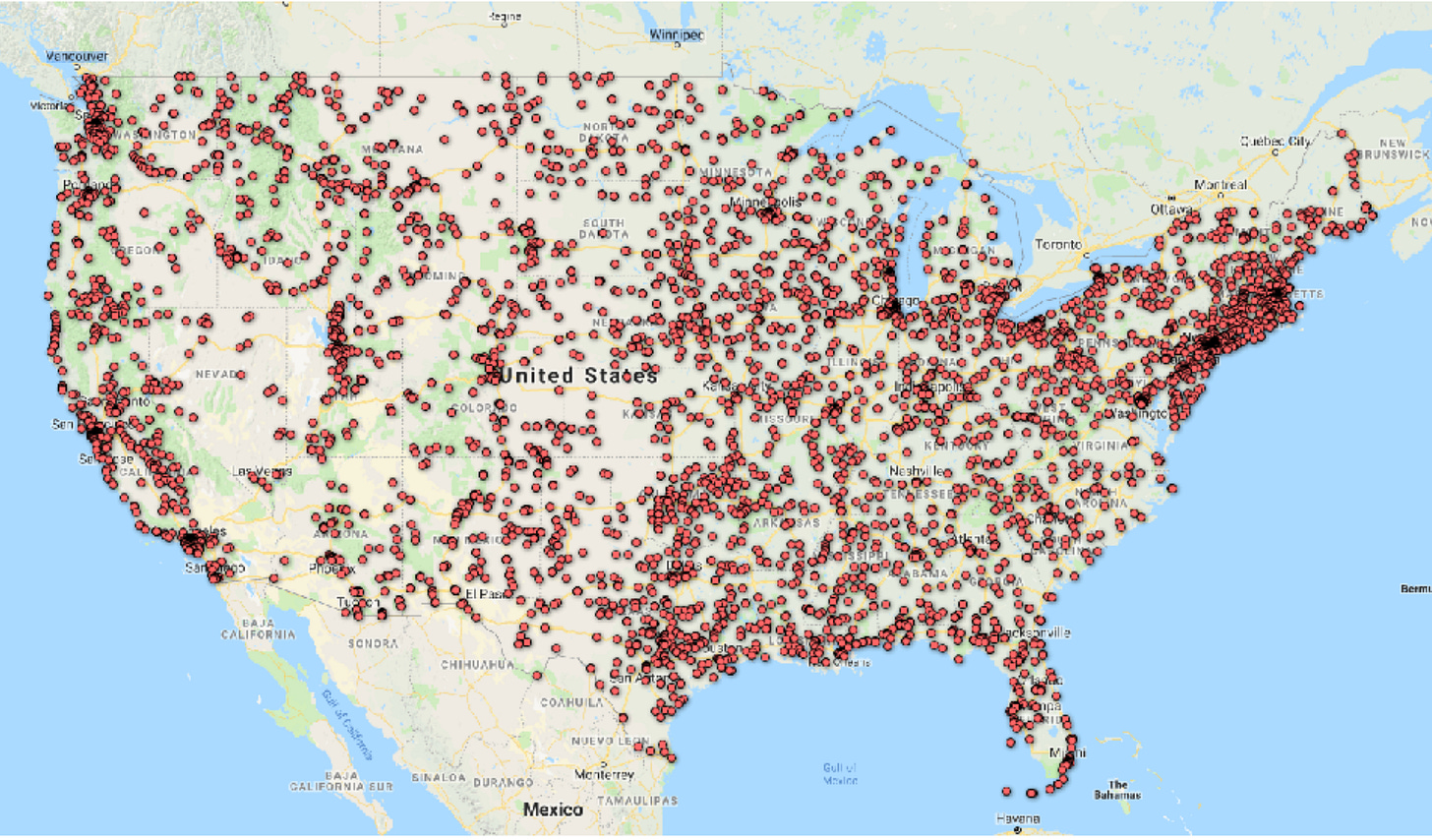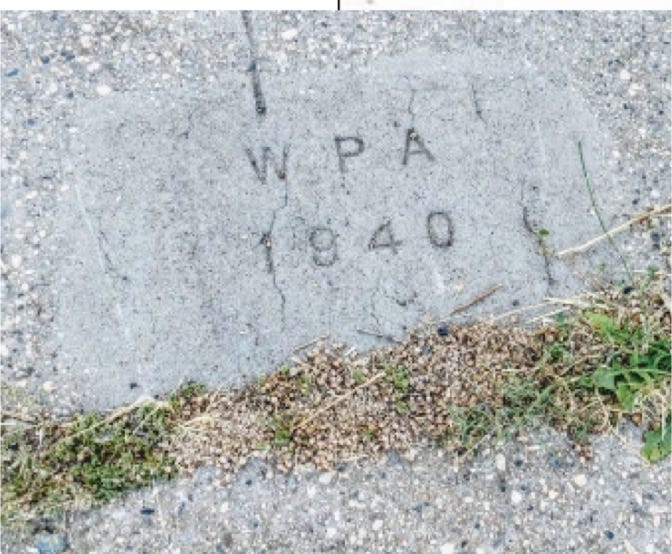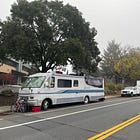Roundup: Where was Camp Sebastopol?
Of bald eagles and how New Deal projects created the buildings and infrastructure we live with today in Sebastopol and West County

I was thinking of writing a satirical caption like “An executive order this week removed the designation of the American Eagle as the National Bird.” In doing a little research, I found quite the opposite story. The American Eagle had actually never been officially named the National Bird until late last year. Here’s a TikTok of Preston Cook, Co-Chair of the National Bird Initiative for the National Eagle Center on NBC News, explaining this oversight.
On Christmas Eve 2024, President Joe Biden signed a bill that officially declared the American Eagle the National Bird. As President Trump is working hard to reverse many of Biden’s actions, perhaps my imaginary caption wasn’t so far off. The eagle sitting atop a dead tree off Occidental Road could not be reached for comment.
New Deal Projects in West County
Steven Thomas has been giving presentations at the Sebastopol Area Senior Center on local topics on Mondays at 11 am. He offered to share them with our readers, and we selected a historical presentation on the New Deal projects that transformed Sebastopol and West County. As commentators—on the Right and Left—are talking about this generation’s inability to build things, it’s useful to reflect on how a previous generation actually did the hard work to shape the world we still live in.
Adapted from a presentation by Steven Thomas
During the New Deal (1933 -1942), thousands of projects were completed by millions of formerly unemployed citizens. Virtually every community was touched by the New Deal. More than the money, it gave people a sense of pride vs. being 'on-the-dole'.
It was a period when most work was done by hand, digging with shovels instead of motorized equipment.
Eighty years ago, West County was all forest and remote orchards. Before the New Deal, West County was impassable six months out of the year—washed out roads, no bridges, no storm drains, field erosion…
Camp Sebastopol
Camp Sebastopol was set up on the base of O’Farrell Hill on Jonive Ridge in what is today the town of Freestone. Roughly 1,100 men lived in the camp.
Think about 1,100 men working all over West County for a decade. These crews were doing more than creating infrastructure, they were rebuilding the public confidence and pride.
Camp Sebastopol Drainage Pipe Plant
The workers earned $30/month with $25 of it going back home to their families. They laid miles of concrete drainage pipe, drilled wells and built check dams. They trenched, ditched, and contoured hillsides for fruit trees and planted shrubs to prevent erosion.
They built and renovated state, county and city structures.
Resurfaced 112 miles of county roads
Built 29 wooden bridges, three masonry bridges and one steel bridge.
Installed 35,000 linear feet of curbs and gutters
26,000 feet of sidewalks
Installed 448 culverts
Sebastopol Road Sewing Plant
During the Depression, this sewing plant closed, but under the New Deal, it was reopened, employing 60 women for 10 years and producing 100,000 garments for WPA construction crews.
Major Projects in the County
Sonoma County Airport
Santa Rosa Hospital
Dredging south Santa Rosa
Armstrong Redwoods
Santa Rosa Junior College (Analy Hall)
Hiding in Plain Sight
Only the large projects were commemorated with plaques and documented for posterity. If you look close enough, you will find WPA “footprints” on the most mundane pieces of construction: sidewalks, bridge abutments, picnic tables, water fountains, etc.
Sebastopol’s New Deal Projects
WPA Art
The New Deal employed artists as well and sent them all around the Bay Area. Some of them did murals and at least one is in downtown Sebastopol.
Steven recommends this interactive site that lets you look up any area and get details on New Deal projects in that area: https://livingnewdeal.org/map/
Are you working remotely from Sebastopol?
We like to hear from you if you live in Sebastopol or West County and work remotely. We’d like to profile those people who don’t go into the office, don’t hang out at the water cooler and also avoid having to commute. We’d like to learn more about you. Email us: sebastopoltimes@gmail.com.
And this week’s ‘So Sebastopol’ winner is…
Sebastopol Police Logs, March 10-16
The following are crimes excerpted from Sebastopol Police Department daily crime log entries and listed at the time the alleged violation was reported.
THURSDAY
8:03 a.m. Failure to appear in court after promising in writing (misdemeanor), at Joe Rodota Bike Trail East and Abbott Avenue. Suspect arrested.
FRIDAY
4:44 a.m. Possession of unlawful paraphernalia and violation of pre-trial release (misdemeanors), at McKinley Street. Suspect arrested.
10:53 p.m. Driving while under the influence of alcohol with a blood alcohol content level of at least 0.08% (misdemeanors) in downtown Sebastopol. Suspect arrested.
OTHER POLICE ACTION
The Sebastopol Police Department also recorded 127 other events requiring police action during the period, such as lost animals, assisting citizens, parking violations, foot patrol, traffic hazards and reckless driving.

























What a fascinating column! Having lived in Sonoma County for only 14 years, I never knew of this history. And your sense of humor about the eagle is delightful!
When I arrived in 1970 I met the late Mick Clumpner who lived in the Camp and was a WPA worker. He was a poet and wrote a short history of the camp and his work. He was a fire watcher around Mt Jackson. They nailed climbing slats to a tree and just climbed up and sat on a limb looking for smoke. His most interesting stories were all the men coming to town to drink and recreate on the weekend. They all had to walk back in the middle of the night. It must have been exciting as a young person. Those old rock projects are great and the camp tent stone foundations still exist.